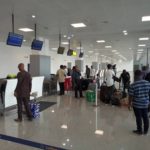
There have been debates over the years on the age of aircraft that operate in Nigeria.
While the Nigerian Civil Aviation Authority (NCAA) pegged the maximum age of aircraft that could be allowed to operate into the country at 22 years, some industry stakeholders kick against the age limit, insisting that airworthiness of aircraft is determined by maintenance.
Some industry operators also excoriated the NCAA for pegging the cycle of major maintenance (C-check) to 18 months, insisting that the period is short and should be extended, considering the huge amount of money spent on carrying out C-checks overseas.
But the NCAA had explained in the past that such seemingly stringent measures were a response to Nigeria’s rate of accidents in the past and the fact that Nigeria does not have major maintenance facility locally with attendant high maintenance climate so it could not compare itself to some advanced countries where 50-year old aircraft could be operated safely because of robust maintenance culture and environment.
Reading accident reports exposed the fact that besides weather issues and pilot error, poor maintenance of aircraft was fingered as the cause of some tragic accidents that happened in Nigeria.
But the Chief Executive Officer, West Link Airlines Limited, and a seasoned aviator, Captain Ibrahim Mshelia, has argued that the airworthiness of aircraft should not be based on age, insisting that once the aircraft can meet the certification requirements for Certificate of Airworthiness (C of A) issued to that aircraft and the owner, the certificate signifies that the aircraft is safe to fly.
“It is not scientifically correct to restrict importation on age and we have said this times without number, today a professional colleague is Minister of Aviation, we hope these are some of the things he will reverse before he leaves.
“The initial 22 years ban were best left as politically motivated for reasons that no longer exists, so why is it still there?
“To give a 22-year life sentence for Nigerian registration is premature. I call on the federal government to please remove that from the laws so NCAA can do their job. That’s for NCAA actually to determine and not the Ministry and or National Assembly. The 22-year ban was done then during the time of Mrs. Kema Chikwe as Minister and the National Assembly of that time,” Mshelia said.
He called for a revisit of the policy, remarking that the policy ought to be revised every 10 years. He described it as anti-development.
Mshelia also insisted that age is not a factor of serviceability, noting that ageing aircraft programme could be more expensive but not out of scope for operators to comply.
The West Link boss explained that aircraft are designed to last based on material test and capabilities of airframes among other things, noting that a non-pressurized airframe would have to be damaged or corroded before it becomes a concern for safety.
He disclosed that the pressurized airframe however is designed based on tested design circles because “each time you take off and land with a pressuring airframe, you add stress to cabin as you pressurize and wings when you land,” adding that the manufacturer counts each flight (takeoff and landing) as a circle.
“Now, some manufacturers can design airframes to go up to 30 to 60,000 circles or even more now. Let’s now look at a typical Nigerian airline which does average four flights with one particular aircraft per day and Monday to Friday as weekends are usually used for maintenance and light schedule (so, we will add 10 percent at the end to compensate for the weekends).
“Four flights a day at five days per week in 52 weeks of the year will be; 1,040 circles. So, if we divide, based on say an assumed first lifespan circle of 30,000 circles. 1,040 annual circles will be 28 years.
“And mind you, this can also go through a D check and be renewed again for whatever the test determines or even another 30,000 circles etc. Don’t forget too that no plane can fly continuously back-to-back for 28 years; they will probably fly average of eight to 10 months in a year. So, take average of nine months.
“That should extend the first life by 28 by further three month annually, which is additional seven years. So, the first circle for that aircraft before overhaul will be 35 years minimum. 22 years therefore is a far cry,” he said.
Mshelia said an aircraft is deemed unserviceable when the manufacturer’s circles are reached and material failures could not be guaranteed and therefore aircraft is unable to pass certain laid down ageing programme maintenance checks and fail to pass a Certificate of Airworthiness inspection.

“Then that aircraft is scrapped. Or if the owner feels like he does not want the plane anymore and scraps it. There are too many technicalities that should not be politicised.
“Those who take decision don’t know and therefore rely on consultants. There are so many armchair ‘consultants’ these days. A real professional will wait to be invited.
“Those in office should be weary of those who throw themselves at them claiming to be experts under all sorts of names these days. Otherwise we will never discard some of these obnoxious rules that hinder General Aviation (GA) growth. When GA grows, everything grows,” he said.






